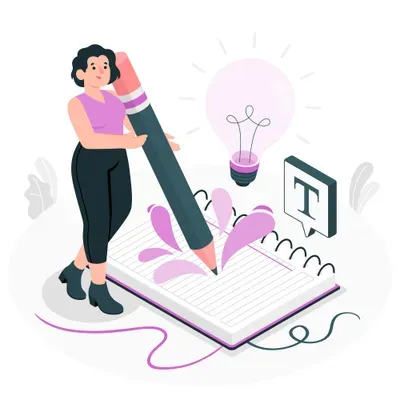
Write a Script for a Podcast
This worksheet aims to guide students through the process of creating their own podcast script for a school project, focusing on planning, researching, structuring, and writing.
Content and methods: The worksheet begins by asking students to brainstorm podcasts they know and their topics, encouraging initial engagement with the medium. It then prompts students to think about what is needed to create a school podcast, before presenting a dialogue between two students, Jenny and Aisha, who are planning their podcast, highlighting aspects like introduction, main content segments, and conclusion. Multiple-choice questions assess comprehension of podcast structure and planning. The worksheet provides detailed instructions on "How to write a podcast script," covering researching the topic, outlining the script (introduction, guest introduction, main part with transitions and multiple topics, summary, conclusion, call to action), and writing tips (conversational tone, conciseness, bullet points). It also offers relevant source titles and summaries for research on adolescent leisure activities and well-being. Students are then guided to create their own podcast outline based on the provided structure and subsequently write their full podcast script. The final step involves revising and marking important parts of their script for emphasis or pronunciation. A sample script is included for teachers as an additional resource.
Competencies:
- Understanding of podcast structure and content planning
- Research skills for topic development
- Scriptwriting, including elements of introduction, transitions, and conclusion
- Critical thinking and self-correction through revision
- Creative thinking and content generation
Target group: 7th-12th grade

Writing a Scary Story
This worksheet aims to guide students through the process of writing a scary story by exploring typical characters, understanding story structure, and utilizing thematic vocabulary.
Content and methods: The worksheet begins by prompting students to brainstorm common scary story characters. It then presents an excerpt of a scary story, and asks students to provide a suitable heading. An informational text defines a typical character in scary stories, detailing their characteristics and historical context. Students are then given a character, a setting, and a situation to use as inspiration for their own story. The worksheet provides a clear structure for a spooky story (introduction, main part, conclusion) with guiding questions for each section. A list of "typical words in scary stories" is provided to aid vocabulary. Finally, students write their story and complete a Halloween-themed word puzzle to reinforce vocabulary.
Competencies:
- Creative writing and storytelling
- Character development
- Understanding of narrative structure
- Vocabulary expansion (thematic words)
- Reading comprehension
- Brainstorming and idea generation
Target group: 4th-6th grade

Writing a review
Practice writing a review for a movie or book

Complex Source Integration - Practice evidence-based writing
Practice writing a report or essay based on different sources. Practice synthesizing, evidence-based writing and citing sources.
The students know how to integrate a variety of sources into their writing.
Content and Methodology: This teaching material introduces different types of source integration and provides exercises and information on citing sources correctly. In the end, students put what they've learnt into practice.
Skills:
- reading comprehension
- knowledge transfer
- academic writing
Target Audience and Level: Grade 10 and higher

Practicing summary writing (all levels)
Use your own text and practice writing a summary

Essay writing - structuring paragraphs

Essay writing - writing an introduction

Essay Writing - the thesis statement

Essay Writing - Structure (basics - intermediate)

Writing summaries (basics)

Writing a letter

